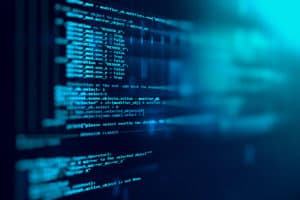 Distributed ledger technology (DLT)-based securities could have a high impact on financial opportunity and value creation in secondary trading, a report exploring the DLT landscape by the Global Financial Markets Association (GFMA), Boston Consulting Group (BCG), Clifford Chance, and Cravath, Swaine & Moore, has found.
Distributed ledger technology (DLT)-based securities could have a high impact on financial opportunity and value creation in secondary trading, a report exploring the DLT landscape by the Global Financial Markets Association (GFMA), Boston Consulting Group (BCG), Clifford Chance, and Cravath, Swaine & Moore, has found.
Tokenisation and fractionalisation could “pool and deepen liquidity, particularly for traditionally illiquid assets”, the report claimed. Specifically, the innovation of DLT could unlock broader market access and new liquidity pools when widely adopted, including approximately $16 trillion in tokenised illiquid assets by 2030.
However, establishing these new markets may be a challenge. Due to the set-up of the sector, the impact which DLT may have on secondary trading is potentially limited in markets which are highly electronified.
The report suggests that first, secondary trading liquidity needs to be established in order to support an eventual DLT-based ecosystem.
Legal and regulatory challenges for DLT adoption in terms of trading stem from how the operation of each jurisdiction differs. In the case of the UK and the EU, the requirement of a trading venue is a clear example. Where securities must be traded and recorded in book-entry form in a CSD, the CSD must operate a DLT platform for DLT-based securities to be issued. In the absence of such technology, they cannot be made fully available to investors.
The report calls for market participants to work together to overcome existing barriers to entry and suggests five key actions, including harmonising the regulatory and legal frameworks on a global scale, establishing common data, architecture and integration standards to enable interoperability and creating standard solutions to the common technical challenges that DLT presents, including regarding scalability, cybersecurity and regulatory compliance.
For now, there remains uncertainty in terms of how the technology fits into the existing legal and regulatory framework. Adam Farkas, chief executive of the GFMA, said: “A technology-neutral and outcomes-based approach to regulation is crucial. Policymaking should focus on creating a regulatory framework that supports financial stability and responsible innovation in digital asset markets while also setting out a level playing field for both new entrants and regulated financial institutions.”
Native security tokens are expected to require new liquidity pools and are likely to exhibit poorer liquidity conditions until critical mass is reached, the report found, and this presents an operational risk for the secondary markets.
“The potential need to immediately preposition securities and cash for clearing and settlement for DLT-based securities could impact liquidity in DLT-based secondary markets, acting as a barrier to entry for investors by tying up assets in pre-funding requirements,” the report said.
In terms of reducing liquidity risk, the fractionalisation of DLT-based securities could aid the process by allowing smaller ticket sizes and increasing investor access, the report added. Additionally, it claims that DLT could have a large impact even on historically illiquid asset classes. Mitigating trading liquidity risk could also be achieved by ensuring pre-funding requirements are set to a level that avoids holding capital for periods that exceed traditional clearing and settlement cycles.
The report also claimed that DLT could go some way to reducing fragmentation by developing bridges between traditional and DLT-based venues.
Operation-wise, in the long-term DLT has the ability to provide a single interface connecting internal systems across various asset classes, and according to the report this risk mitigation could be particularly impactful when combined with existing FIX frameworks.
Looking short-medium term, the report notes that this is likely to be an incremental change as empirically trading systems may need to be duplicated, running traditional and DLT-based markets in parallel.